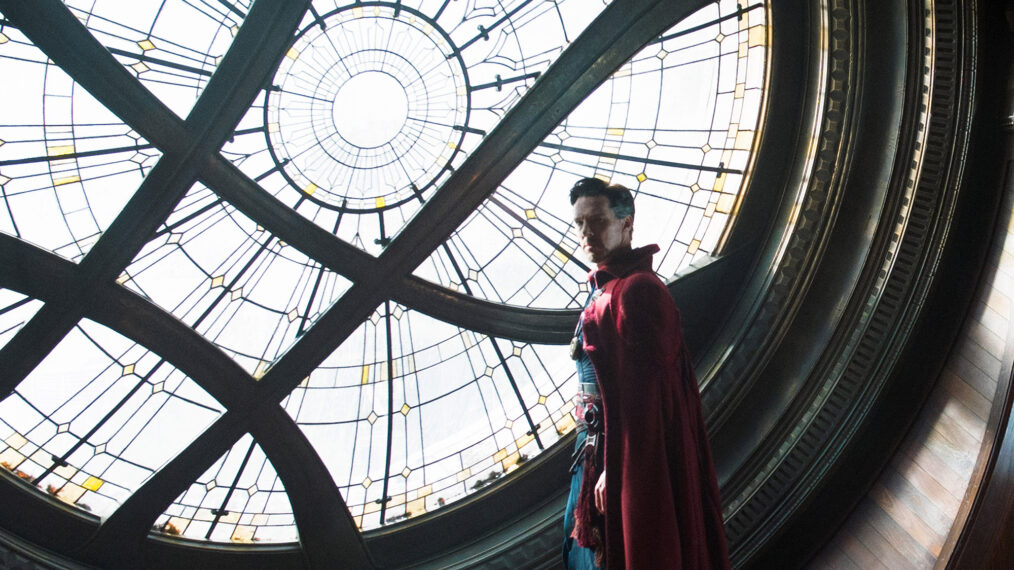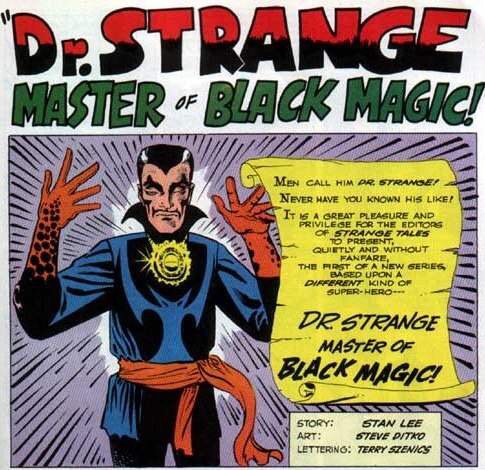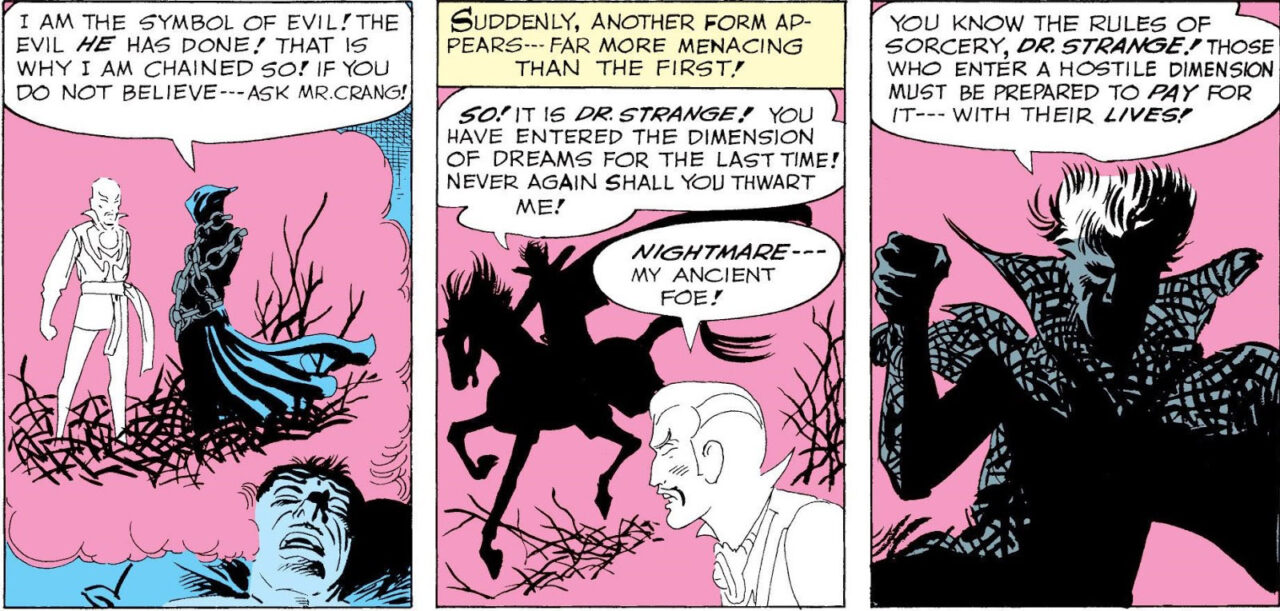Marvel Comics’ Doctor Strange Made His First Appearance 60 Years Ago

Ultimately, in the grand scheme of the cosmos and the various alternate dimensions that Marvel Comics has shown us are out there, 60 years may not be a very long time. But here in our particular part of the multiverse, six decades is pretty substantial, so I’d like to commemorate the recent 60th anniversary of Doctor Strange’s first appearance in a Marvel comic book.

(© Marvel/earthsmightiestblog.com/fair use)
Stephen Strange made his debut in the last of four stories featured in issue No. 110 of Marvel’s anthology series Strange Tales, which was cover-dated July 1963 and published April 9, 1963.
“Never have you known his like!” exclaims the introductory panel to the story, before continuing: “It is a great pleasure and privilege for the editors of Strange Tales to present, quietly and without fanfare, the first of a new series, based upon a different kind of super-hero —”
Right after that comes the name of this hero, as well as the title of his initial, five-page tale: “Dr. Strange: Master of Black Magic!”
The story was written by Stan Lee, with art by Steve Ditko and lettering by Terry Szenics. It finds a man who is being tormented by bad dreams calling on Strange (who given a vaguely and stereotypically Asian look in this early incarnation) for help.
When the Master of the Mystic Arts (to use a later, more benign-sounding moniker for the good doctor that was eventually used in place of the whole “black magic” thing) enters the man’s dreams to find the source of his nightmares, who else should he find, of course, but his old enemy Nightmare (the villainous ruler of the Dream Dimension made his first appearance here, as well).

(© Marvel/weirdsciencedccomics.com/fair use)
Other Doctor Strange mainstays also debuted in the story: Wong (who goes unnamed), and the Ancient One (referred to as the Master).
It’s not a Strange origin story, but it does a quick and effective job and setting up what the character is about, as well as some of his powers.
The Comic Book Realm on YouTube has put together a very nice and dramatic video presentation that allows you to read-through Strange’s tale in Strange Tales #110, complete with eerie background music befitting the otherworldly aspects of the comic:
It may seem hard to believe now, 15 years into the Marvel Cinematic Universe, when many characters from Marvel’s long comics history both large and small are household names, but there was a very long time during which the likes of Doctor Strange, and even Iron Man, Captain America and Thor, were fairly B-level characters not well known, if at all, by the general public beyond comic book readers. For decades, they continued about their superhero business, to borrow a quote from that Strange Tales intro, “quietly and without fanfare,” at least relative to the wider popular culture.
Strange may have even been a bit lower in terms of recognition than those others, given his place in the somewhat more niche and less overtly “superhero-y” occult, supernatural and cosmic genres of stories in which he featured.
I remember becoming aware of him as a kid in the ’70s through seeing his comic books on stands, and they looked interesting enough, but at that time, when I had the occasion to get a comic, I’d usually opt for a Spider-Man title (maybe Werewolf By Night, in the event I was looking for something more on the scary/supernatural side).
Since I wasn’t into Doctor Strange during the ’70s, I missed the 1978 CBS TV movie Dr. Strange that was meant to be a pilot for a proposed series, as had been done around that time with the network’s The Incredible Hulk, starring Bill Bixby and Lou Ferrigno, and The Amazing Spider-Man, led by Nicholas Hammond.
I watched both of those shows at the time, especially my guy Spidey, but don’t recall being aware of Dr. Strange. It ended up being a one-off after tanking in the ratings and reviews, and never became a series. It’s hard to tell if I would have tuned in then even if I had known about it, but I do want to see it now, given how delightfully campy it appears, with a porn stache-wearing Peter Hooten as Strange looking less like a Sorcerer Supreme and more like a late-’70s swinger on his way back from a key-swap party.
But the movie does interestingly feature Jessica Walter as Marvel villain Morgan le Fay, and Anne-Marie Martin (billed as Eddie Benton) as Clea. The Clea featured here, though, has no magical powers, unlike the sorceress who eventually became Strange’s wife after being introduced in issue No. 126 of Strange Tales, and who was teased in the mid-credits sequence of the 2022 MCU feature Doctor Strange in the Multiverse of Madness, where she was played by Charlize Theron.
Multiverse of Madness was Strange’s second standalone MCU feature after 2016’s Doctor Strange, and again featured Benedict Cumberbatch as the character. The actor had previously also worn Strange’s cape for appearances in other blockbuster MCU titles alongside other heroes, including Avengers: Infinity War (2018), Avengers: Endgame (2019) and Spider-Man: No Way Home (2021).
So now — 60 years following his comic-book introduction, and after staying relatively low-key to the average public for probably about 50 of those years before finally breaking through with a very effective live-action interpretation courtesy of Cumberbatch and Marvel Studios — Stephen Strange has finally worked his magic into the minds of a much larger audience, who were likely thrilled when the Multiverse of Madness credits tease also promised: “Doctor Strange will return.”
